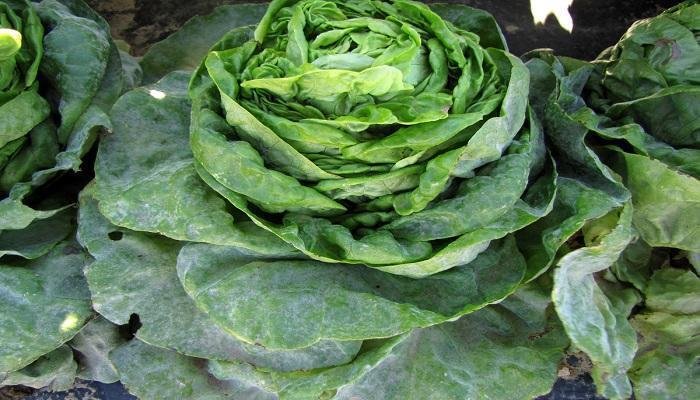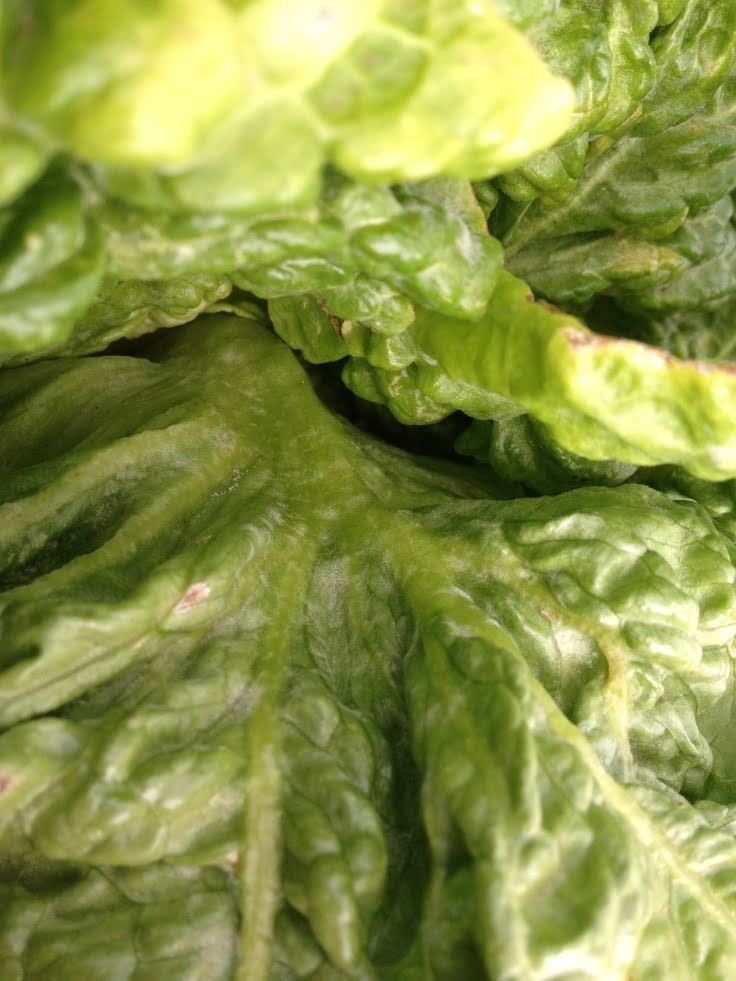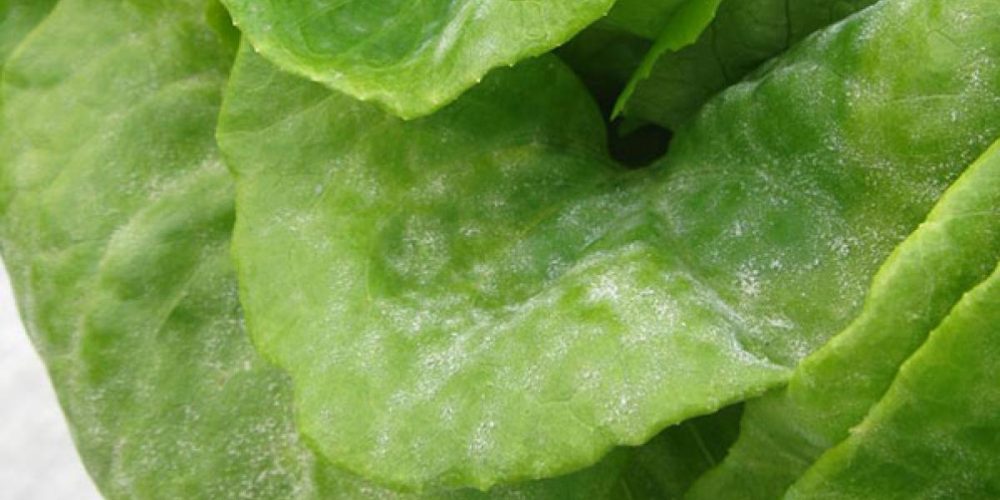Table of contents of the article
TogglePowdery mildew is a fungal disease that affects lettuce leaves and causes a decrease in crop quality. In this article from the “WORLD OF PLANTS” website, we discuss the symptoms of powdery mildew in lettuce and methods of effective prevention and control.
Cause of powdery mildew in lettuce
- Powdery mildew
- Scientific name: 0 Erysiphacea
- Type of disease: fungal
- Pathogen: Erysiphe cichoracearu
The fungus spores remain inside the leaf buds and plant debris. Wind, water, and insects can transfer spores to nearby plants. Although powdery mildew is a fungus, it can grow well in dry climates. The fungus can survive at temperatures between 10 and 12 C, but the optimal temperature is 30 C. In contrast to downy mildew, small amounts of rain or regular morning dew can accelerate the spread of powdery mildew.
Suitable conditions for powdery mildew in lettuce
The infection occurs when the temperature and humidity around the plant rise, as warm temperatures between 21-27 degrees Celsius are suitable for fungal growth to begin on the plant.
Host of powdery mildew in lettuce
Most plants are susceptible to powdery mildew, but some plants are more susceptible to powdery mildew than others, such as begonia, sunflower, chrysanthemum, rose, Cucurbita family (watermelon, squash, squash, cucumber, lettuce, parsley, grapes, Solanaceae family (potato, Pepper, tomato
Effect of powdery mildew on lettuce
Powdery mildew fungi clog the pores of the leaves and block light from the cells, which impairs the plant's ability to carry out photosynthesis. Plant growth stops, leaves fall, and the plant struggles to survive.
Life cycle of powdery mildew in lettuce
Fungi reproduce through asexual and sexual reproduction. In temperate countries after the hibernation period. In countries with moderate temperatures, both methods may be important, but the conidia produced by the mycelium are the primary source of infection at the beginning of the grape growing season and the formation of new terminal branches.
Conidia germination requires a temperature between 7 - 31 degrees Celsius, and germination is inhibited at a temperature higher than 33 degrees Celsius. It needs a relative humidity of 30 - 100%.
Maximum spore spread and growth occurs at 24-26°C and 90% relative humidity. . The production of conidia from this primary infection begins and the secondary disease continues to spread, repeating this cycle throughout the growing season. The launch and release of the ascomy spores requires about 2.5 mm of rain, and infection occurs at a temperature higher than 10 degrees Celsius, regardless of the degree of wetness of the leaf.
Symptoms of powdery mildew in lettuce
- The disease affects the lettuce crop when the plant approaches full maturity
- The infection occurs under dry weather conditions, and the severity of the infection increases in the absence of free water on the leaves
- Initial fungal growths appear on both surfaces of the leaf. Then, as the disease develops, a large percentage of the leaves become covered with white, powdery fungal growths.
- High humidity is one of the most important factors for the spread and severity of the infection
- Very small circular dots that suddenly grow on the leaves of the plant and are easy to spot.
- In any fruit other than cucurbits, you will find this powdery mildew, an external parasite.
- The disease multiplies if it is not treated, and other symptoms appear that are more dangerous to the plant, such as: dryness of the shoots, damage to new nodes, drooping and wilting of flowers.



Preventive measures for powdery mildew in lettuce
To prevent powdery mildew, according to the advice of modern agricultural technology, you must constantly spray the plant with protective materials such as: micronized sulfur. Continuous examination of all leaves of plants grown next to each other in the aquatic environment. Because this disease is contagious, you must check all aquatic plants in your laboratory to ensure that the fungus is not transmitted if it is already present.
Organic control of powdery mildew in lettuce
Organic methods of controlling powdery mildew, according to modern agricultural technology, are among the safest therapeutic methods for plants. Because it is done using a dilute solution of hydrogen peroxide, which is the best solution compared to using chemical methods. It is used in certain ratios, let it be 1:9, and the largest number in this ratio is undoubtedly related to water. The farmer continues to spray this solution once every 7 days.
Chemical control of powdery mildew in lettuce
There are a number of fungicides that are effective against lettuce powdery mildew. Sulfur has been used for centuries to control powdery mildew on a number of crops. Be careful not to apply during warm weather (>90°F within 3 days of application) or plant poisoning may result. Azoxystrobin and myclobutanil are commonly used with other products. For information on the effectiveness of the product in desert production systems, please refer to a recent study by Matheron and Borkas. Before using any product to control powdery mildew on lettuce, check product labels and limitations and consult local extension specialists and pest control advisors. In addition, the use of the entire product must be accompanied by a robust fungicide resistance management program.
In conclusion, we would like to note that we, at the world of plants website, offer you all the necessary services in the world of plants, we provide all farmers and those interested in plants with three main services::-
- Artificial intelligence consulting service to help you identify diseases that affect plants and how to deal with them.
- Blog about plants, plant diseases and care of various crops ... You are currently browsing one of her articles right now.
- An application that provides agricultural consultations to clients, as well as a service for imaging diseases and knowing their treatment for free – Click to download the Android version from Google Play Store، Click to download the IOS version from the Apple App Store.
References
- Koike, S., Gladders, P., & Paulus, A., (Eds.). (2007). Vegetable diseases: a colorful guide. Boston, MA: Academic Press.
- Simko, I, Rauscher, G., Sideman, R. G., McCreight, J. D., & Hayes, R. J. (2014). Evaluation and mapping of QTL for powdery mildew resistance in lettuce. Plant Pathology, 63, 344-353.
- Lebeda, A. and Myslerova, B. (2011). Classification, distribution and biology of powdery mildew in lettuce (Golovinomyces cichoracearum sensu stricto). Plant Pathology, 60, 400-415.
- Author: Younis Youssef Mullan and others. Book or source: Diagnosing fungal diseases and methods of controlling them - Section: Agriculture / Plant pests and diseases and methods of controlling them / Plant diseases and their causes / Fungi and the diseases they cause to plants
- Younis Youssef Mullan, Salah Al-Din Al-Husseini Muhammad, and Yasser Eid Ibrahim (2008) Diagnosing fungal diseases and methods of controlling them




